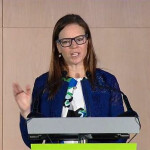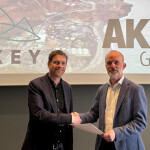Gulf Seafood Institute representatives recently completed a tour of Maine’s aquaculture industry facilities with the hope of learning more about how they can jumpstart a similar aquaculture hub in the Gulf of Mexico.
By traveling to Maine, the two dozen fishermen, scientists and state officials were able to explore real-world examples of successful aquaculture companies and seafood farmers, GSI said in a press release. Among the facilities visited by the group were Cooke Aquaculture’s Atlantic salmon hatchery and the company’s offshore Atlantic salmon pens in East Machias, the USDA Coldwater Aquaculture Research Facility and the University of Maine Center for Cooperative Aquaculture Research in Franklin, and the Hollander and de Koning mussel processing plant in Trenton, according to the Ellsworth American.
The tour funded by NOAA and organized by the Gulf Seafood Institute, Michael Rubino, director of NOAA Fisheries Office of Aquaculture, said.
“The Gulf of Mexico is known for its seafood cuisine, but most of the fish served in regional restaurants is imported,” Rubino said. “Local aquaculture can complement local commercial fishing to help bring local fish back to daily menus and provide a healthy center-of-the-plate protein.”
Carrie Castille, agriculture and natural resources consultant to the Gulf Seafood Institute, said the tour gave its participants valuable insight.
“The need for safe, sustainably sourced, high-quality protein continues to increase,” Castille said. “The Gulf of Mexico can provide a self-supporting ecosystem that could enhance fisheries’ production and provide a consistent supply to the consumer.”
The Maine Aquaculture Association, which includes 190 fully-licensed farms, as well as 200 “pre-revenue” farms – farms started within the last three years – was happy to show its guests from GSI that growing shellfish and finfish in the Gulf of Mexico can be successful, especially due to rising domestic demand for local seafood, MAA Executive Director Sebastian Belle said.
“We export little or no product because demand for North American-grown seafood here is off the charts. We sell everything we can grow, and we sell it at a premium price,” Belle said.
While the Gulf has some unique challenges because of the frequency of hurricanes, the survivability of farms has increased dramatically during the last decade, Belle said. However, the Gulf’s shallow water may pose challenges, he said.
“The reason water depth is important is because you need a minimum depth for fish cages, as well as shellfish long-line operations,” Belle said. “One way to deal with big storms is to submerge gear in deeper water. Gulf operators will have to figure out alternatives, [and] some areas of the Gulf simply may not be optimal for aquaculture development.”






